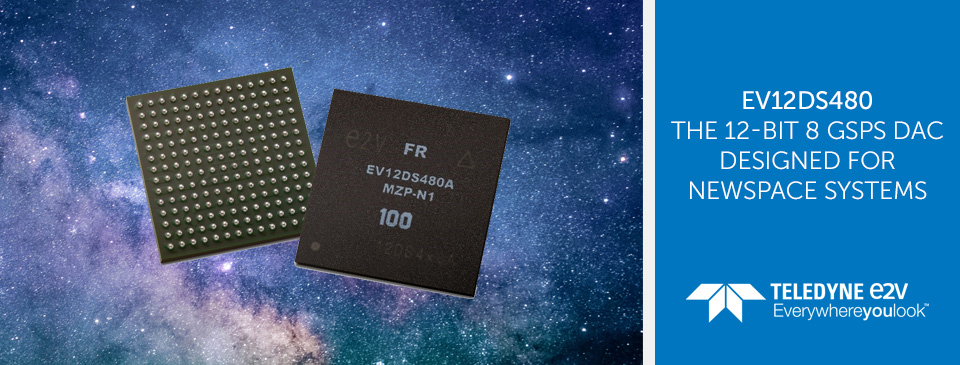
Aiming at being integrated in high-reliability high-performance space applications, the EV12DS480 DAC has been tested to assess its performance behavior in harsh space environment. The EV12DS480 is a 12-bit 8 GSps DAC, ready for space applications, designed for Newspace systems, offered in various reliability grades (including NASA Grade 1). The hardness assurance tests include Heavy Ions (HI) and Total Ionizing Dose (TID) measurements. TID tests are performed to evaluate the functionality and performance parameter drifts of the Device Under Test (DUT). During the HI tests, the Single Event Latch-up (SEL) and Single Event Effects (SEU [1], SEFI [2], SET [3]) have been evaluated.
Complete radiation test reports are available to download on the EV12DS480 product webpage.
Several devices are curently under test with a dose rate of 10 mrad/s. At 100 krad(Si), all the DUTs are fully functional.
The EV12DS480 has neither functional failure nor parameter drift up to 100 krad(Si) with a dose rate of 36 rad/h (10 mrad/s).
The targeted cumulative dose is fixed at 150 krad(Si) and the test conclusion will be provided as soon as the dose is reached.
HI tests were performed at various sampling rates (4.5 GSps, 6 GSps and 8 GSps), at the RADEF facility, part of the Accelerator Lab in the Department of Physics at the University of Jyväskylä, Finland.
Here are the conclusions of the tests:
These SEE results show that the EV12DS480 DAC, can be used as a space product.
DUT in the heavy ion irradiation chamber:

As an illustration of these results, the SEE rate is calculated based on the OMERE [4] code, and DACOUT signal output measurements, for GEO missions:
| Weibull fit Parameters | SEE Rate Calculation | ||||||
| Effect | W
(MeV.cm²/mg) |
s | Threshold (critical) value of LET
L0 (Mev.cm²/mg) |
Saturation Cross-Section (cm²) | Mission (GEO) | Rate/Day | MTBF [5] (Days) |
| SEE=SET+SEFI | 40 | 1.6 | 1.50e-2 | 5.68e-5 | M3 [6]
15 years |
2.8e-4 | 3571 |
| M8 [7]
16 days |
1.23e-1 | 8.1 | |||||
| SET | 40 | 1.6 | 1.50e-2 | 3.25e-5 | M3
15 years |
1.58e-4 | 6329 |
| M8
16 days |
6.26e-2 | 16 | |||||
| SEFI | 40 | 1.6 | 1.50e-2 | 2.44e-5 | M3
15 years |
1.18e-4 | 8474 |
| M8
16 days |
4.41e-2 | 22.7 | |||||
[2] SEFI: Single Event Functional Interrupts
[3] SET: Single Event Transient
[4] See http://www.trad.fr/en/space/omere-software/
[5] MTBF: Mean Time Before Failure
[7] M8: Solar eruption, worst-case flux